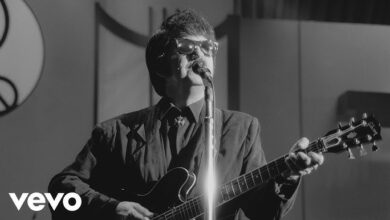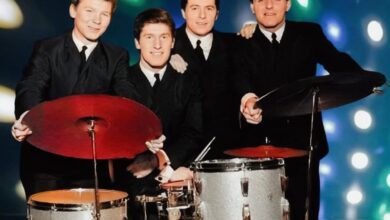Do You Recall This Iconic Dance from the 1950s? It Evokes Powerful Nostalgia
In the late 1950s, a dance craze known as “The Stroll” swept across America, captivating teenagers and adults alike with its simple yet engaging steps. Originating from the rhythm and blues scene, this line dance became a staple at sock hops and dance halls, embodying the spirit of the era. Its popularity was further amplified by television shows like “American Bandstand,” where teenagers showcased the dance to a national audience.
The Diamonds, a Canadian vocal quartet, played a pivotal role in popularizing “The Stroll” with their 1957 hit song of the same name. Composed by Nancy Lee and Clyde Otis, the track featured a catchy beat that perfectly complemented the dance’s smooth, gliding movements. The song reached number four on the U.S. pop charts and number five on the R&B charts in 1958, cementing its place in rock and roll history.
A notable performance of “The Stroll” took place in February 1958 on a local television dance show in Idaho. This broadcast captured the essence of the dance, showcasing local teens moving gracefully to the music. The footage serves as a nostalgic reminder of the era’s vibrant youth culture and the communal joy that dance brought to people’s lives.
The dance itself was characterized by two lines of dancers, typically with males on one side and females on the other, facing each other. As the music played, each couple would take turns “strolling” down the aisle between the lines, improvising their steps and adding personal flair. This format allowed for individual expression within a structured setting, contributing to its widespread appeal.
Dick Clark, the iconic host of “American Bandstand,” noted the similarity of “The Stroll” to the Virginia reel, a traditional folk dance. This connection to earlier dance forms may have contributed to its acceptance across different age groups, bridging generational gaps through shared cultural practices.
The influence of “The Stroll” extended beyond the 1950s, experiencing a resurgence during periods of nostalgia for the era. It was featured in films like “American Graffiti” (1973) during a high school dance scene, and referenced in the musical “Grease,” highlighting its enduring legacy in American pop culture.
The Diamonds, formed in 1953, were known for their smooth harmonies and ability to adapt rhythm and blues hits for mainstream audiences. Their rendition of “The Stroll” showcased their versatility and contributed to their reputation as one of the leading vocal groups of the time. The group’s success with this song exemplified the cross-cultural influences that defined the music scene of the 1950s.
The choreography of “The Stroll” was simple enough for beginners yet allowed for creativity, making it accessible to a wide audience. Its laid-back tempo contrasted with the more frenetic dances of the time, offering a relaxed alternative that still encouraged social interaction and fun.
As with many dance crazes, “The Stroll” eventually faded from mainstream popularity, but its impact on dance culture remains significant. It paved the way for future line dances and continues to be taught in dance classes focused on vintage styles, preserving its legacy for new generations to enjoy.
Reflecting on “The Stroll” offers insight into the social dynamics of the 1950s, illustrating how music and dance served as vehicles for expression and connection. The dance’s enduring charm lies in its simplicity and the sense of community it fostered, reminding us of the timeless joy that comes from moving to the rhythm of a shared beat.
For a glimpse into this iconic dance, you can watch a 1958 performance of “The Stroll” below:



